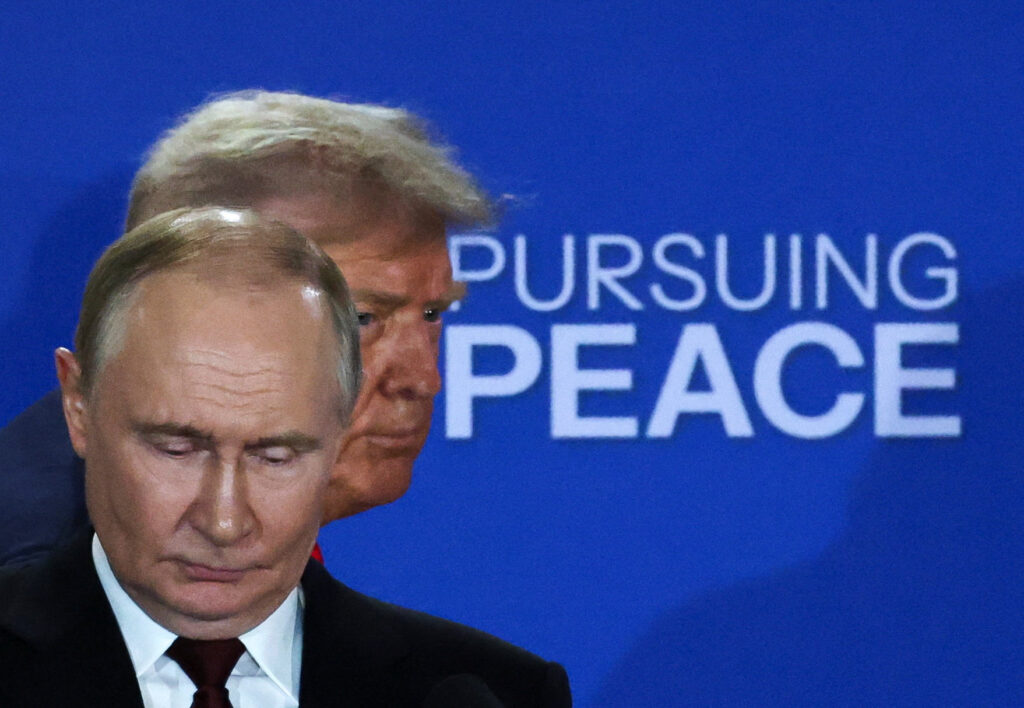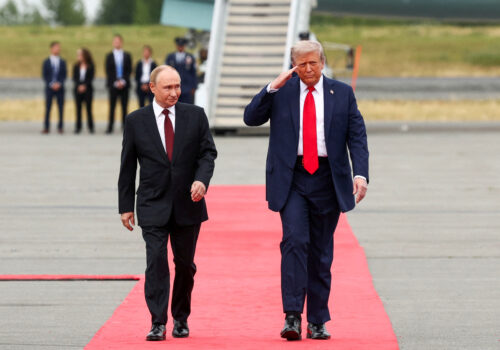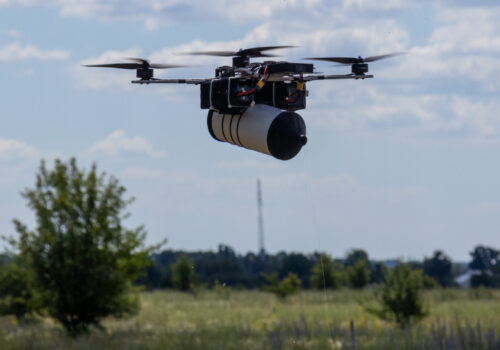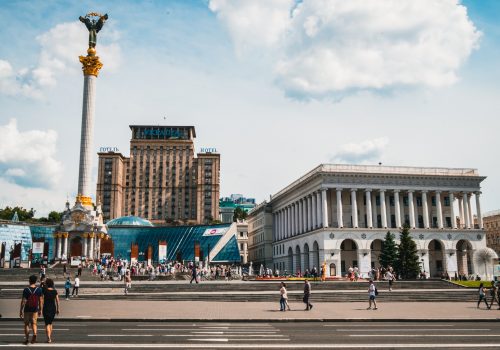Recent summits in Alaska and Washington DC succeeded in thrusting the Russian invasion of Ukraine back into the global headlines. However, this flurry of diplomatic activity failed to achieve any meaningful breakthroughs in the faltering US-led peace effort to end Europe’s largest war since World War II.
Russian President Vladimir Putin and Ukrainian President Volodymyr Zelenskyy both achieved a number of specific goals during their meetings with US President Donald Trump. The red carpet treatment Putin received in Anchorage was a symbolic victory that ended the Kremlin dictator’s international isolation in some style, while the subsequent summit allowed him to sidestep the threat of new US sanctions and deflect calls for an immediate ceasefire.
Zelenskyy, meanwhile, secured Trump’s tentative commitment to participate in security guarantees for Ukraine and managed to avoid making any dangerous territorial concessions. Crucially, the White House meeting also provided the Ukrainian leader with an opportunity to demonstrate that his relationship with Trump has improved considerably since their infamous Oval Office spat six months ago.
These limited gains were welcomed in Moscow and Kyiv, but they could not mask the overall lack of progress toward peace. White House officials initially indicated that Trump had reached preliminary agreement with Putin over security guarantees for Ukraine and a bilateral meeting with Zelenskyy, but the Kremlin has since contradicted these claims.
Speaking on August 20, Russian Foreign Minister Sergei Lavrov downplayed the prospect of any direct talks between Putin and his Ukrainian counterpart, while demanding that Russia play a key role in any security guarantees for Ukraine. Lavrov’s absurd insistence on a Russian veto over Ukraine’s future security speaks volumes about Moscow’s lack of interest in a lasting settlement. Russia then underlined its uncompromising stance by launching a massive bombardment of Ukraine early on August 21 that included a targeted missile strike on an American-owned electrons plant in the west of the country.
Stay updated
As the world watches the Russian invasion of Ukraine unfold, UkraineAlert delivers the best Atlantic Council expert insight and analysis on Ukraine twice a week directly to your inbox.
It should now be abundantly clear that Russia will continue to reject Trump’s peace overtures until Putin faces significantly more pressure to end the war. At present, the Russian ruler believes he can stall for time and ultimately outlast the West in Ukraine while slowly but steadily pummeling the Ukrainians into submission. Economic measures including increased sanctions and secondary tariffs can certainly impact his thinking, but Putin’s position is unlikely to undergo any fundamental changes unless he loses the battlefield initiative and is forced to confront the possibility of military defeat.
While others put their faith in diplomacy, Ukraine appears to be well aware that the key to success remains stopping Putin’s army. With this in mind, Kyiv is working hard to counter misleading perceptions among the country’s allies that Russian military victory is somehow inevitable. During Monday’s White House meeting with Trump, Zelenskyy made a point of stressing that in the last one thousand days of full-scale war, Russia has managed to occupy less than one percent of additional Ukrainian territory. This information was news to Trump and helped swing his mood, according to the BBC.
The ongoing Battle of Pokrovsk in eastern Ukraine offers important insights into the Russian army’s diminishing offensive potential. Since the summer of 2024, Putin has sacrificed tens of thousands of soldiers and thousands of armored vehicles in an attempt to seize the small but strategically significant city of Pokrovsk in the Donbas region. Despite these heavy Russian losses, the city remains under Ukrainian control.
Eurasia Center events

Beyond Pokrovsk lies Ukraine’s most heavily fortified zone, a fortress belt of industrial towns and cities that many see as the key to the defense of eastern Ukraine. Unlike the largely rural terrain close to Pokrovsk, the northern Donbas area around the cities of Sloviansk and Kramatorsk is dotted with networks of concrete fortifications and layered defensive lines that have been under construction since the start of Russia’s invasion more than a decade ago in 2014.
If Russian commanders attempt to replicate their meat grinder tactics against Ukraine’s sophisticated defenses in the northern Donbas, the outcome will likely be catastrophic for Moscow. Indeed, many Ukrainian analysts believe a Russian offensive to seize the region would lead to the bloodiest battles of the entire war and result in hundreds of thousands of Russian casualties. This helps to explain why Putin is now calling for Ukraine to hand over the region without a fight as part of any peace settlement.
Russia remains understandably eager to present the invasion of Ukraine as a resounding military success, with Kremlin officials including Putin himself frequently boasting of relentless advances and battlefield victories. However, these triumphant depictions are increasingly at odds with reality. A recent intelligence update from Britain’s Ministry of Defense estimated that at the current pace, it would take Russia almost four and a half years to completely seize the four partially occupied Ukrainian provinces claimed by the Kremlin.
Russia’s inability to achieve a decisive battlefield breakthrough should encourage Kyiv’s partners to become more ambitious in their military support for Ukraine. Putin may currently have no interest in ending the war, but his army has already been exposed as anything but invincible and is far more vulnerable than he would like us to believe.
The United States and Europe can now make a decisive intervention of their own by dramatically strengthening the Ukrainian military. If Ukraine is provided with the tools it needs in order to prevent further Russian advances and expand attacks on the Kremlin war machine inside Russia, Putin may be forced to rethink his invasion and seek a lasting settlement. Unless that happens, the war will continue indefinitely against a backdrop of further futile summits and diplomatic distractions.
Elena Davlikanova is a senior fellow with the Center for European Policy Analysis and Sahaidachny Security Center. Yevhenii Malik is a veteran of the Ukrainian Army’s 36th Marine Brigade.
Further reading
The views expressed in UkraineAlert are solely those of the authors and do not necessarily reflect the views of the Atlantic Council, its staff, or its supporters.

The Eurasia Center’s mission is to enhance transatlantic cooperation in promoting stability, democratic values, and prosperity in Eurasia, from Eastern Europe and Turkey in the West to the Caucasus, Russia, and Central Asia in the East.
Follow us on social media
and support our work
Image: US President Donald Trump and Russian President Vladimir Putin hold a press conference following their meeting to negotiate an end to the war in Ukraine, at Joint Base Elmendorf-Richardson in Anchorage, Alaska. August 15, 2025. (REUTERS/Jeenah Moon)





